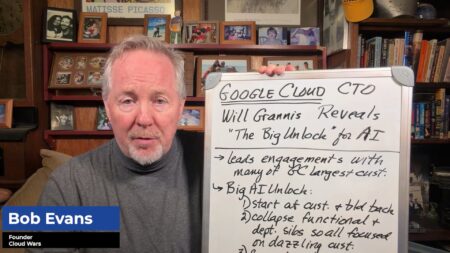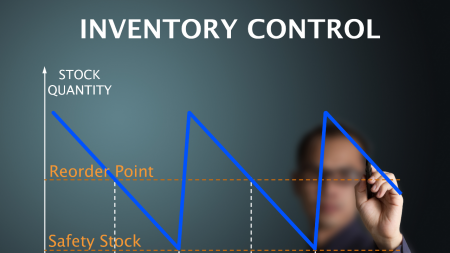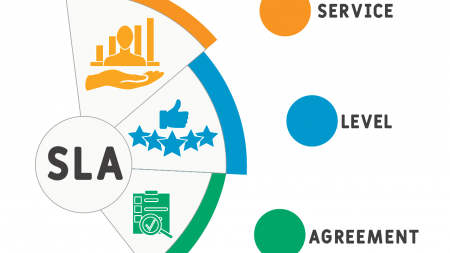Are you ready for year-end and how to capture COVID pay on the W-2? Are you up to date on tax changes and notifications? Let’s get together and discuss these items and more! – Take a Tour through GP HR Features.
This session is geared for an audience with a basic skill set.
This session will be available for CPE credits pending completion of session survey post event.
Introduction to the Project/Payroll Module – This session is for beginners and will focusing mainly on project (overview).
Level: Basic
Get hands-on experience creating dashboards for measuring Supply Chain KPIs. Choose from 3 exercises using BC and Power BI to Create: 1) Dashboard with Vendor KPIs for on-time delivery, lead times, and number of back orders; 2) Inventory dashboard with inventory KPIs for evaluating ABC class for new items, fast moving items and bin location, number of times counted, and adjustments; or a 3) Warehouse operations dashboard with KPIs such as number of picks and putaways by user, number of cycle counts by user, number of on-time and late shipments.
Accompanies the How2 session of the same name.
Level: Intermediate
Automating legacy or manual processes and ensuring efficiency from order-to-cash is essential for business growth and scalability. Join Bob Stark and Jon Cooper from Versapay as they preview ChargeLogic, Versapay’s payments, invoice, and AR automation solution to accelerate receivables, reduce costs, and simplify your customer engagements.
When it comes to monitoring Power BI there are compliance, governance, performance, and implementation questions to consider.
In this session, we will look at how you can find the right answers by monitoring Power BI. We will look at the Power BI Audit log for usage, license, and other audit information. We will look at what the Power BI API can show us about data sets, refresh history, Enterprise Gateway information, premium capacity, and artifact inventory. Lastly we will show how you can automate the data collection via Azure and PowerShell and report on the results.
Session Level: Intermediate
Robotic Process Automation (RPA) is a technology present on the market for couple of years. It helps companies to automate repetitive tasks done by employees or to make integration between systems not having available endpoints.
This session will help you to:
•Learn what is RPA
•Learn what is attended RPA vs. unattended RPA
•Discover capabilities of UI flows
•Discover capabilities of WinAutomation
•Get inspired to use RPA in your processes too!
Using RPA helps to increase effectiveness in processes by automation of the most repetitive tasks. It also ensures the tasks are done errorless. UI flows is GA since 1st April and quite recently Microsoft acquired Softomotive, maker of WinAutomation.
Join me to learn today about the technology of the near future.
Session Level: Intermediate
Microsoft Dynamics SL 2018 continues to release new features and updates. Attend this session to learn about what released through SL 2018 CU4 and what we will be releasing soon in SL 2018 CU5. Included will be high-level discussions on Web Apps and the Microsoft Power Suite solutions and how they work with Dynamics SL.
Upon completion of this session, participants will be able to:
• Describe the Dynamics SL CU4 features.
• Describe the upcoming Dynamics SL CU5 areas of enhancement
• Describe the new Power Suite solutions being delivered
Level: Basic
Join this session to learn about Power Apps Components & Component Libraries and their importance in enabling reusability in Power Apps.
We will explore Components, Component properties, Component Libraries, etc. with demos of building components and reusing components across Apps.
Session Level: Basic
Staying connected to customers is more important than ever before. Engaging customers the way they want means empowering organizations to act on insights across the entire journey, build life-long relationships, and create trustworthy selling and service experiences that are consistent, personalized, and always-on. This session will cover key Dynamics 365 product announcements and the partner opportunity to help companies create meaningful customer experiences in a rapidly changing environment.
Do you still question how NAV/BC Inventory Costing is posting? This session with breakdown Posting Groups, Item Ledger Entries, and Value Entries for Standard and other costing methods. Understand how these postings work together in NAV/BC for reporting. We will also review the Adjust Cost and Post Inv Cost to G/L routines and how they create Adjustments.
This session will be available for CPE credits pending completion of session survey post event.
Level: Basic
Staying connected to customers is more important than ever before. Engaging customers the way they want means empowering organizations to act on insights across the entire journey, build life-long relationships, and create trustworthy selling and service experiences that are consistent, personalized, and always-on. This session will cover key Dynamics 365 product announcements and the partner opportunity to help companies create meaningful customer experiences in a rapidly changing environment.
In D365FO there are many different options for inventory costing models…but what do they all mean? In this session we will dive into the different options to review how your inventory is costed for each model along with the pros/cons of the model. We will use demonstrations in D365 along with theoretical-based calculations to explore these options.
The content of this session is geared toward an audience with beginner and intermediate-level knowledge of the subject area.
This session will be available for CPE credits pending completion of session survey post event.
Join this session to learn the latest Power Apps updates from Microsoft.
Session Level: Basic
Join this session to understand how to trace inventory related transactions through Dynamics SL. You will also learn the underlying tables in the Screen and how to use linked screen to explore detailed information about Inventory Items
This session will be available for CPE credits pending completion of session survey post event.
Level: Basic
Join this session to learn the latest updates on Power Automate from Microsoft.
Session Level: Basic
Let’s begin with the 12 tips and tricks that help you make use of best practices in inventory accuracy, tracking, costing, etc. But then what? Learn what to do to make sure things stay accurate. Ongoing review & cycle counts makes month end a breeze. We will review the 12 steps recommended for setup, then proceed to opportunities for your organization to assure your inventory remains accurate. Finally wrapping up with inquiry best practices, and ongoing use of utilities.
This session is geared for an audience with a basic skill set.
This session will be available for CPE credits pending completion of session survey post event.
Get updated with all things Power BI. Join this session to hear what’s new with Power BI from Microsoft. Session Level: Basic
Wondering how the Internet of Things can play a role in your production management and control. This session walks through the new IoT intelligence scenarios, the moving parts needed to make it work and how they can help production supervisors be more responsive to events that impact production efficiency and ultimately customer service.
Hear the latest Power Virtual Agent updates from Microsoft in this session.
The sales tax world is evolving since the Wayfair ruling in 2018. Join us to discuss when the GP tax tables will work for your business and when you’ll need to consider automation.
This session is geared for an audience with a basic skill set.
This session will be available for CPE credits pending completion of session survey post event.
Do you need more functionality related to your inventory items? Looking for more insights? Let’s review all the other elements available with items and using items throughout Dynamics NAV/Business Central. We’ll take a thorough review of vendor and customer pricing, units of measure, variants, cross references, attributes, and extended text, as just a few of the options that can add robustness to your system.
Want to get to the cloud but not sure where to begin? This session will explore the components, best practices, and potential risks involved in a cloud strategy for Dynamics GP. Possibly paths will be explored as well, including benefits and considerations when migrating to Azure, choosing a cloud service provider, as well as considering multi-tenant and private configurations.
This session is geared for an audience with an intermediate skill set.
This session will be available for CPE credits pending completion of session survey post event.
Join us to see all the FREE amazing tools hiding in the PSTL (Professional Services Tools Library) toolbox, from GL modifier/combiner, RM Transaction Unapply to Company Copy and more!
Participants will take away:
– Understanding of the tools contained in the PSTL toolset and their use
– Gain knowledge to use the tools in your GP environment
This session is geared for an audience with a basic skill set.
This session will be available for CPE credits pending completion of session survey post event.
When we were setting up Dynamics NAV environments, it was always on-premise. There was no decision to make on where to install the system. Enter the era of Business Central, a new platform with new cloud-based options. Many companies have questions …
What option is best for us? Should we go SaaS (Software as a Service)? Should we remain on-premise? Are those my only options?
During this presentation, we will explain these options, highlighting the positives and negatives of both approaches. You will come away ready to make an informed decision on where to set up your Business Central environment.
This session will be available for CPE credits pending completion of session survey post event.
Level: Intermediate
In the expanding eCommerce environment, Returns Management is quickly becoming a significant part of daily processing. In this session we will cover both Customer Return processing and Purchasing Returns. For Customer Returns you will learn how to issue an “”RMA”” and send paperwork to your customers to use as a Packing Slip for your dock. We will also cover inventory quantity types for quality control considerations and refund options. For Purchasing Returns we will focus on the related Inventory considerations. The attendee will come away knowing which of the 4 documents types to use given the scenario and how to prevent or workaround the Inventory “”gotcha’s””. This session is geared for an audience with a basic skill set. This session will be available for CPE credits pending completion of session survey post event.
Learn how SLAs and Entitlements can be implemented to enhance customer relationships. Join us for a deeper dive into creating complex SLAs and defining entitlements. See how custom SLA relationships can be designed for use cases outside of standard customer service (such as opportunity). Gain an understanding on combining the two features can enhance customer service interactions and satisfaction.
The content of this session is geared toward an audience with intermediate-level knowledge of the subject area.
With our ever-changing needs of tracking information and not wanting to change our General Ledger account structure, you have two tools with which to leverage to gather data and report on the numbers for projects. Project accounting allows the tracking of a project be it internal or external whereas Analytical Accounting allows you to do the same thing but is done at the account level only. Let’s explore the differences of each product.
This session is geared for an audience with a basic skill set.
This session will be available for CPE credits pending completion of session survey post event.
AI Copilot Podcast

AI Agent & Copilot Podcast: Avanade Exec on Security Data Storage, Integration Advances in Microsoft Sentinel
Sentinel Data Lake provides important data storage and management improvements; universal connectors facilitate integration of third-party data such as SAP, Jason Revill says.































